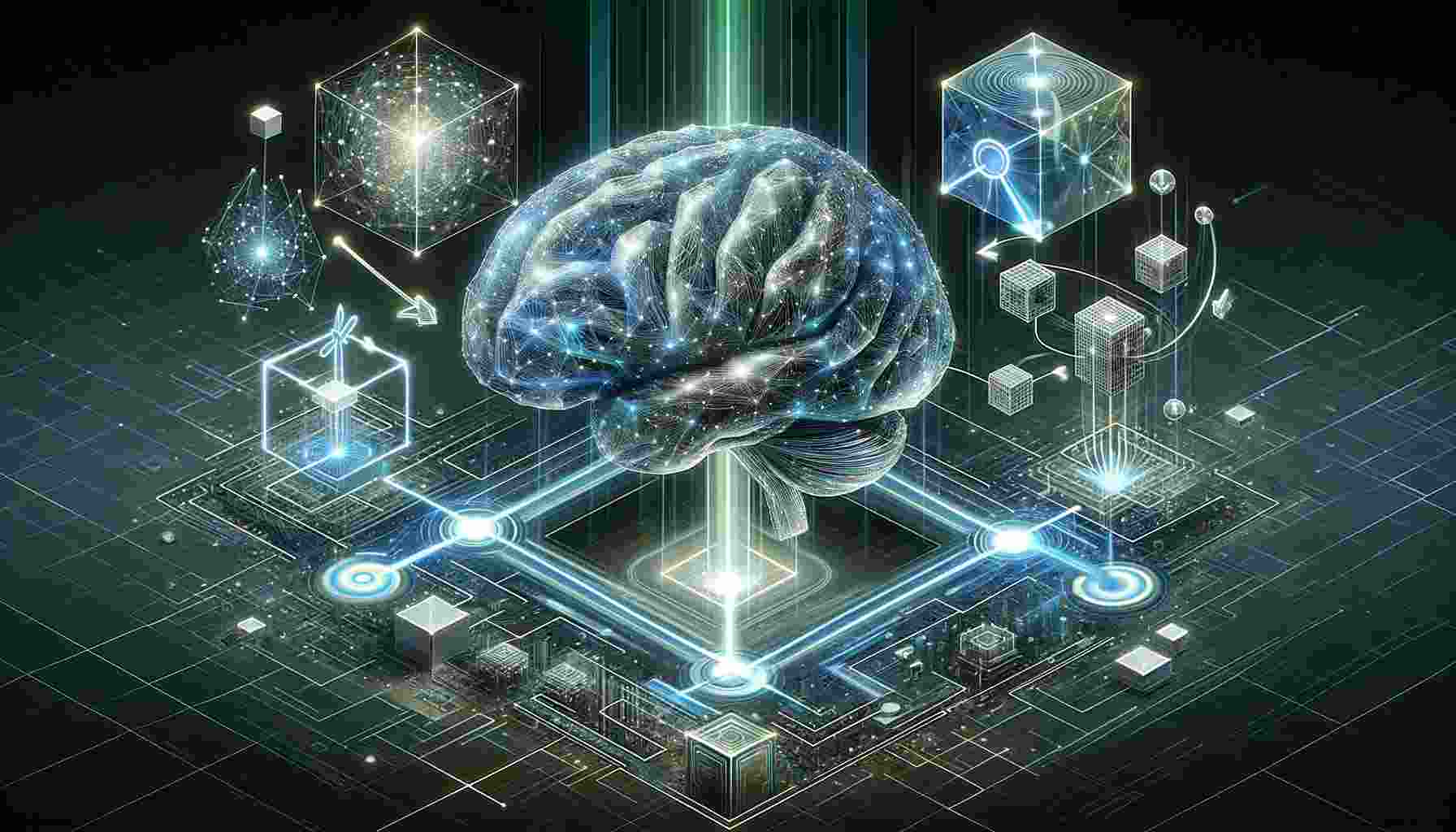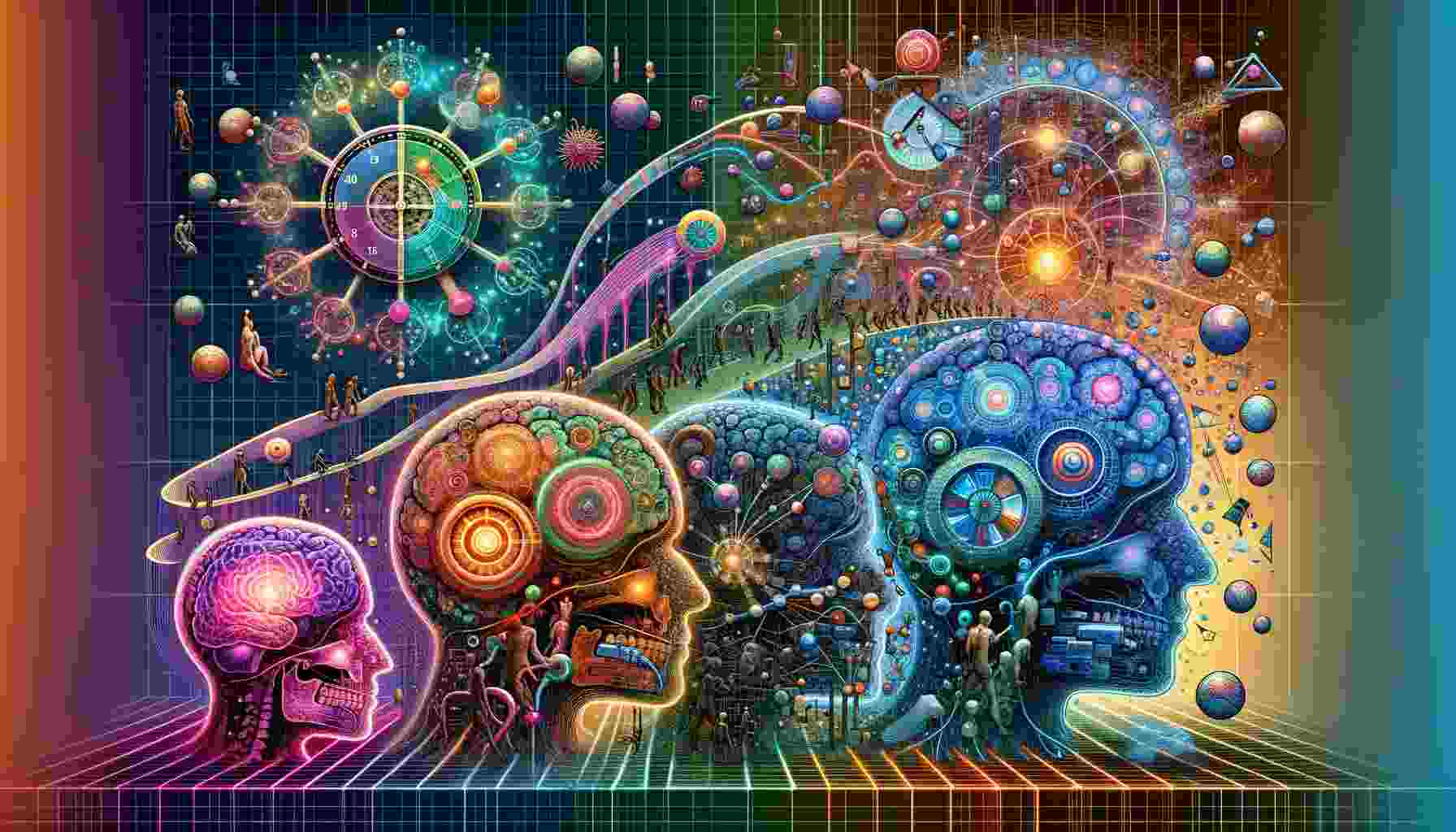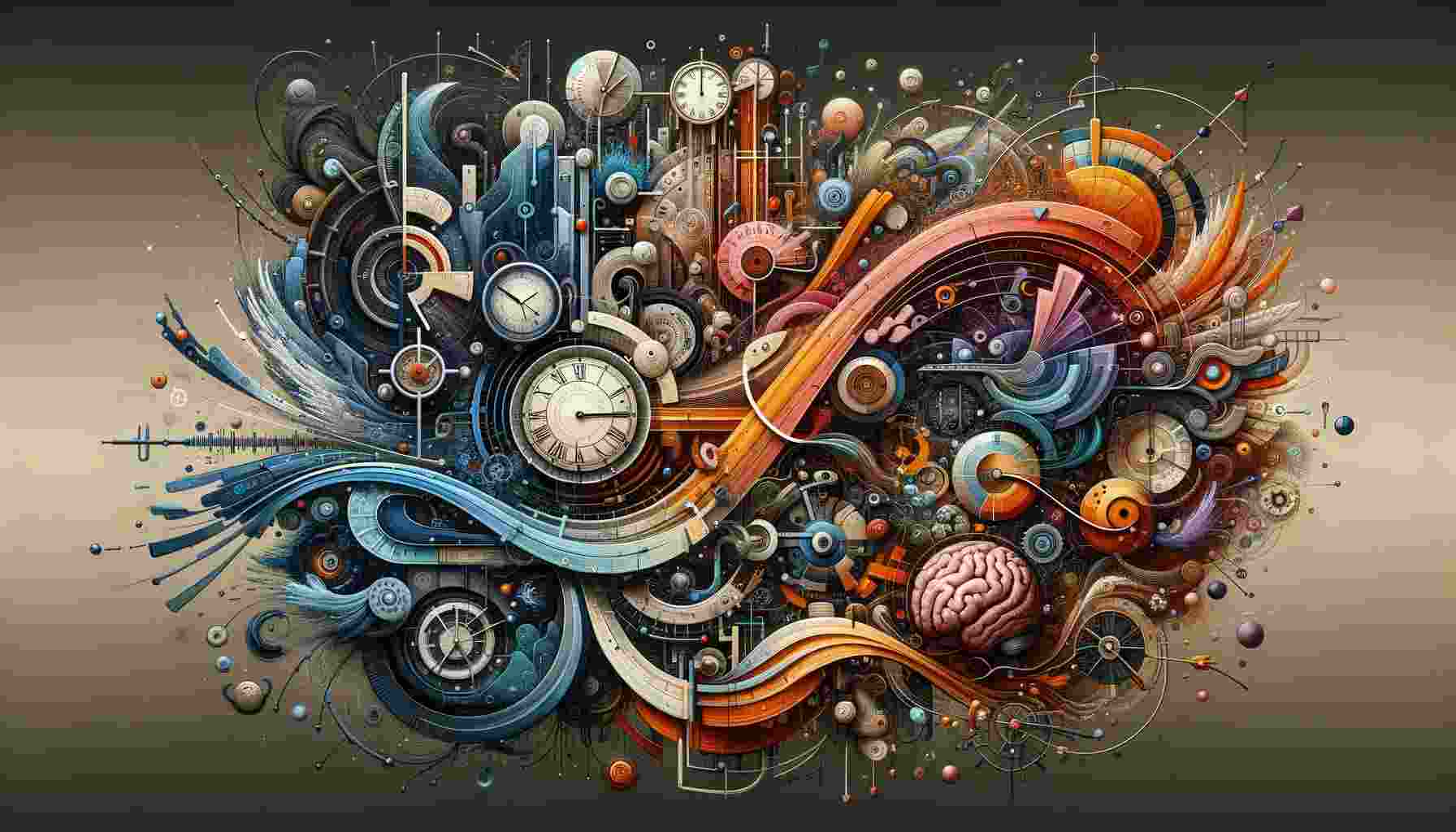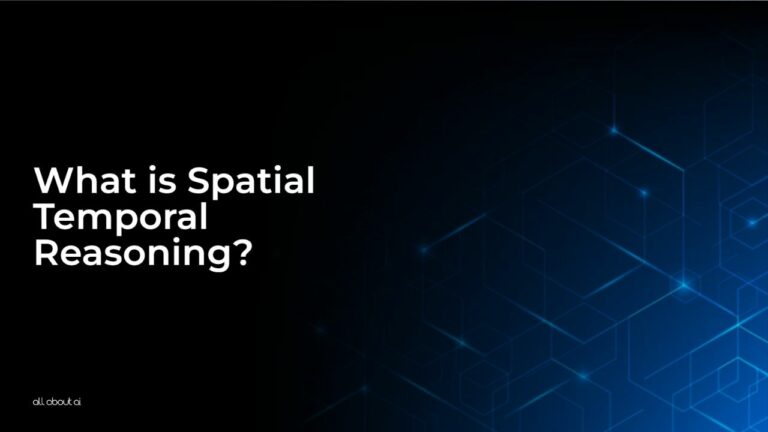What is spatial temporal reasoning in AI? It refers to the ability to understand, predict, and manipulate spatial relationships over time. This concept incorporates advanced spatial-temporal models, which are pivotal in interpreting dynamic data within AI frameworks.
Looking to learn more about spatial-temporal reasoning? Keep reading this article written by the AI specialists at All About AI.
What is Spatial Temporal Reasoning? : Not Your Average Time Machine!
Spatial temporal reasoning in AI is like playing a game where you think about where things are and how they move or change over time. Imagine you’re playing with toy cars. You need to know where each car is now, where it will be later, and how they all move around each other. In AI, computers learn to do this with lots of information, like a big puzzle. They use special patterns and models to understand and guess how things move and change in places over time. It’s like the computer is learning to be really good at figuring out this moving puzzle, which helps it make smart decisions.
How Does Spatial-Temporal Reasoning Work in Technology?
Spatial-temporal reasoning operates on the principles of artificial intelligence reasoning techniques, employing advanced spatial-temporal models. These models are essential for real-time data processing in AI, allowing for the analysis of complex patterns and trends that vary across different locations and times.

Basic Mechanics and Principles
Spatial-temporal reasoning in technology involves algorithms and models that understand and predict the spatial relationships of objects and phenomena over time.
This type of reasoning is particularly complex because it must consider not only where objects are located but also how they move and interact over time.
Techniques like interval algebra and Region Connection Calculus (RCC8) are critical for interpreting these spatial-temporal relationships. Interval algebra helps in understanding the sequence and duration of events, while RCC8 focuses on spatial relations among regions.
Integration with Current Technologies
Spatial-temporal reasoning is increasingly integrated into modern technologies. For example, in geographic information systems (GIS), it helps in mapping and analyzing land use changes over time.
In autonomous vehicles, spatial-temporal reasoning is crucial for navigation and obstacle avoidance. Additionally, in the realm of IoT, devices equipped with sensors collect spatial-temporal data used for monitoring environmental changes or managing smart cities.
Why is Spatial-Temporal Reasoning Important in AI?
The importance of spatial-temporal reasoning in AI lies in its ability to process and analyze dynamic environments. It enables AI systems to understand the world more similarly to humans, considering both spatial contexts and temporal evolution.
This understanding is crucial for applications where the timing and location of events are critical, such as in predictive analytics or real-time decision-making.
Real-world Applications and Examples
- Smart Agriculture: AI uses spatial-temporal reasoning to analyze crop growth patterns and predict yields.
- Urban Planning: Helps in simulating urban expansion and planning infrastructure development.
- Healthcare Monitoring: Used in patient tracking systems to monitor movement and predict health events.
- Environmental Protection: Assists in tracking and predicting environmental changes like deforestation.
- Market Analysis: Helps businesses analyze consumer behavior patterns over time and space.
What Are the Challenges in Implementing Spatial-Temporal Reasoning?
Implementing spatial-temporal reasoning in AI faces challenges such as handling vast amounts of real-time data and developing complex computational models that can accurately interpret spatial and temporal variations.
Data Complexity and Integration
The integration of spatial and temporal data, often from varied sources, presents a significant challenge. This involves not only handling vast amounts of data but also reconciling different formats and standards.
Algorithmic Complexity
Developing algorithms capable of effectively modeling spatial-temporal dynamics is complex. These algorithms need to understand both spatial relationships and temporal changes, which is a non-trivial task.
Real-time Processing and Computational Demands
Providing real-time analysis of spatial-temporal data is crucial yet challenging, as it requires substantial computational power and resources.
Data Privacy and Security
Ensuring the security and privacy of spatial-temporal data, particularly when it involves sensitive information, is a significant challenge.
Accuracy and Reliability
Maintaining high levels of accuracy and reliability in the predictions and analyses made by spatial-temporal reasoning systems is essential for their effective application.
How is Spatial-Temporal Reasoning Evolving?
The evolution of spatial-temporal reasoning in AI is marked by advancements in AI reasoning techniques and the development of more sophisticated spatial-temporal models.

Advances in Data Processing and Machine Learning
Improvements in data processing capabilities and machine learning algorithms are driving the evolution of spatial-temporal reasoning. These advancements are enhancing the ability of AI systems to interpret complex spatial-temporal data.
Integration with Emerging Technologies
Spatial-temporal reasoning is increasingly being integrated with emerging technologies such as IoT and cloud computing. This integration is expanding the capabilities and applications of spatial-temporal reasoning in various fields.
Wider Application Across Industries
Spatial-temporal reasoning is expected to find broader applications across different industries, from healthcare to urban planning, providing more nuanced and dynamic insights.
Enhanced Predictive Analytics
Advancements in spatial-temporal reasoning are likely to lead to significant improvements in predictive analytics, offering more accurate forecasts and better decision-making tools.
Real-time Analysis and Interaction
Future developments are expected to focus on real-time data processing and analysis, enabling more immediate and interactive applications of spatial-temporal reasoning.
Integration with IoT and Smart Technologies
Further integration with IoT and smart technologies is anticipated, which will enhance data collection and analysis capabilities in real-time environments.
Case Studies: Spatial-Temporal Reasoning in Action
Case studies in various sectors, from urban planning to environmental monitoring, showcase the application of spatial-temporal reasoning. These examples highlight the role of AI in analyzing and interpreting complex spatiotemporal data.

Case Study 1: Geospatial Semantic Segmentation of Satellite Imagery Data
This case study demonstrates the use of a neuro-symbolic approach for enhancing the accuracy of geospatial semantic segmentation in satellite imagery.
It involves integrating deep learning with RCC8 spatial reasoning to improve image classification and correct segmentation errors. This approach highlights the synergy between AI and spatial reasoning in satellite data analysis.
Case Study 2: Symbolic Meta-Learning Interface for Learning Relative Directions
The second case study explores a symbolic meta-learning interface designed for learning relative directions. This approach emphasizes the importance of multi-task learning in grounding relative directions.
It uses a visual question answering (VQA) dataset called GRiD-3D, which is instrumental in training neural models to understand relative directions in images. The dataset includes tasks like object detection, orientation estimation, and relation identification.
The study shows that training models on multiple tasks, rather than a single one, significantly improves their ability to understand and interpret spatial relationships, highlighting the potential of neuro-symbolic learning in spatial-temporal reasoning.
Want to Read More? Explore These AI Glossaries!
Begin your AI learning adventure with our comprehensive glossaries, designed for newcomers and seasoned experts alike. Use this as your primary resource to enhance your AI expertise and explore new domains within the field.
- What is a Capsule Neural Network?: It is a class of artificial neural networks specifically designed to address the shortcomings of traditional convolutional neural networks (CNNs) in tasks involving hierarchical and spatial relationships.
- What is Case Based Reasoning?: Simply put, it is a powerful concept in the field of artificial intelligence that mimics human problem-solving by learning from past experiences.
- What is Cataphora?: The term Cataphora refers to a linguistic and computational concept that involves pronouns or phrases that refer back to a previous word or phrase, often used to create cohesion and maintain context in natural language processing (NLP).
- What is Categorization?: Categorization refers to the process of organizing and classifying data or objects into distinct groups or categories based on their shared characteristics, attributes, or properties.
- What is Chain of Thought?: Chain of thought (CoT) in AI can be defined as the interconnected series of logical and computational steps an AI model undergoes when processing information, making predictions, or solving problems.
FAQs
What is the difference between spatial and temporal?
What is spatial-temporal reasoning brain activity?
What is the difference between spatial and temporal analysis?
What is an example of spatial-temporal reasoning?
What is an example of spatiotemporal data?
Final Words
Spatial-temporal reasoning in AI represents a significant leap in our ability to process and interpret complex data. By integrating spatial intelligence in AI, temporal analysis in technology, advanced spatial-temporal models, and techniques for real-time data processing, we are enhancing our understanding and capabilities in AI.
This article was written to answer the question, “what is spatial-temporal reasoning.” Are you looking to learn more about the wider world of AI? Read through the rest of the articles we have in our AI Key Terms Index.





